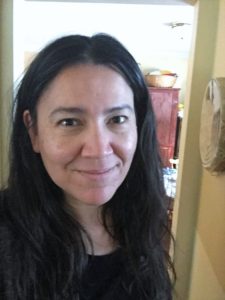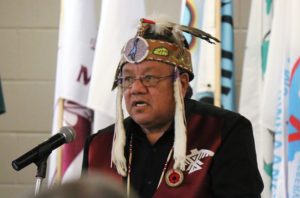‘…We’re not being heard,’ says Anishinabek Nation Grand Council Chief on recent provincial education cuts

By Jennifer Pereira
Anishinabek Honour Songs and land acknowledgements are combined with ‘O Canada’ as a regular part of the morning at Parry Sound High School (PSHS). The high school is one of seven secondary schools in the Near North District School Board (NNDSB) district which is located in the Robinson Huron Treaty territory. Parry Sound High School teacher Johna Hupfield hopes the Anishinabek components aren’t lost in the chaos of the recently announced cuts to education. Those cuts have been sending shockwaves throughout the province, including Anishinabek territory.
In the beginning of May, the NNSB has served about half of its high school teachers with redundancy notices. Those redundancies are contrary to the government announcement in early April, when Education Minister Lisa Thompson told media that no teacher would lose their jobs. The Conservative government plan was to save about $851 million by phasing out teaching positions in Ontario.
The cuts to education mean larger class sizes, mandatory online classes as well as cuts to Indigenous programming. Johna Hupfield, an Indigenous studies and Anishinaabemowin teacher at PSHS has been given her ‘redundancy’ letter. In an e-mail to her from the school board, she was told, “This letter will serve as notice that the current staffing levels of Secondary Teachers employed with the Near North District School Board exceed the total number of teachers required on the ensuing school year of 2019-2020. As per Article L14.04.04 of the current Collective Agreement your 1.0 position has been determined to be redundant effective August 31, 2019.”
Receiving the redundancy notice was certainly a blow to Hupfield, as the Wasausking First Nation citizen has been teaching for 23 years with the NNDSB, and 11 of those years have been at PSHS.
She fears the momentum of Anishinabek and Indigenous education will be lost in the mix of the education cuts. According to Hupfield, the gains in recent years have been Anishinaabemowin and Indigenous studies, which have been a real positive for all students. These are welcome initiatives, especially since the high school receives students from five First Nations in the area: Moose Deer Point, Wasauksing, Shawanaga, Magnetawan and Henvey Inlet First Nations.
“Given the crunch from the province, we’ll find out what will be offered in the provincial curriculum,” said Hupfield. “Indigenous education is definitely a lens that’s supposed to be considered.”
Hupfield hopes the local communities will have a voice when it comes to Indigenous education at the school.
“I think our Chiefs have a say in it. Whether or not that works with the ministry of education… Plus, we have an educator who happens to be Indigenous.”

Anishinabek Nation Grand Council Chief Glen Hare agreed with Hupfield and is worried about where the state of Indigenous education in public schools will be headed.
“I truly believe that our language, Anishinaabemowin, that we were getting it to be recognized in the schools,” expressed Grand Council Chief Hare. “We’re still way behind French, and we were getting there. I feel we’re being targeted with language. I hope teachers find a way, and find resources to teach the kids.”
Meantime, although Nipissing First Nation has a school of its own, off-reserve citizens will still be affected by the cuts. Nipissing First Nation Chief Scott McLeod took a cautious approach and didn’t want to speculate too much on the provincial funding cuts.
“Until we see the actual budget, it’s hard to tell where we stand right now.”
As far as large class sizes go, Chief McLeod said, “Large class sizes have always been a concern of ours, especially with Indigenous communities. It does raise concern over the success rate under an already stressed learning environment.”
Announced cuts to libraries in the province will also have a detrimental affect on education because of the mandatory online classes that have also been announced in the funding cuts.
“At Nipissing, we’re luckier than most, we have access to high speed through our library,” noted Chief McLeod. “Potentially, there could be impacts to First Nations who don’t have that access. It’s a higher burden to our communities.”
The cuts to education are not unlike what happened in 1997 when Conservative Premier Mike Harris was steering the province. Glen Hodgson, a teacher and union president of District 4 of the Near North School district, said he hasn’t seen such deep cuts since the ‘Harris’ days. Hodgson is also not fond of e-learning.
Not only is it not a good learning environment, Hodgson said, “The mandatory e-learning takes away from the schools, and it puts an undue burden on students in small and rural areas due to potential lack of access to broadband internet.”
Hupfield, meanwhile, would like to see the momentum maintained when it comes to Indigenous education and supporting youth.
“I’m passionate about working with Indigenous youth,” she said. “I think it’s really important that our mainstream politicians work with us and learn our history and understand Anishinabek.”
Grand Council Chief Hare encourages people to speak up about the funding cuts.
“We need to start being vocal now, because we’re not being heard,” he said.


